-
 Bitcoin
Bitcoin $117500
2.04% -
 Ethereum
Ethereum $3759
3.02% -
 XRP
XRP $3.171
3.30% -
 Tether USDt
Tether USDt $1.000
0.03% -
 BNB
BNB $782.4
2.52% -
 Solana
Solana $187.2
5.62% -
 USDC
USDC $0.0000
0.02% -
 Dogecoin
Dogecoin $0.2380
5.26% -
 TRON
TRON $0.3175
1.07% -
 Cardano
Cardano $0.8227
4.03% -
 Hyperliquid
Hyperliquid $44.50
5.44% -
 Sui
Sui $4.020
10.07% -
 Stellar
Stellar $0.4396
6.28% -
 Chainlink
Chainlink $18.32
4.55% -
 Hedera
Hedera $0.2628
10.71% -
 Bitcoin Cash
Bitcoin Cash $554.8
4.90% -
 Avalanche
Avalanche $24.20
4.60% -
 Litecoin
Litecoin $113.7
2.31% -
 Shiba Inu
Shiba Inu $0.00001413
5.99% -
 UNUS SED LEO
UNUS SED LEO $8.984
0.11% -
 Toncoin
Toncoin $3.326
7.22% -
 Ethena USDe
Ethena USDe $1.001
0.00% -
 Uniswap
Uniswap $10.49
4.56% -
 Polkadot
Polkadot $4.092
4.02% -
 Monero
Monero $326.6
1.30% -
 Dai
Dai $1.000
-0.01% -
 Bitget Token
Bitget Token $4.570
2.49% -
 Pepe
Pepe $0.00001267
5.10% -
 Aave
Aave $297.3
3.10% -
 Cronos
Cronos $0.1344
4.10%
What does MFI low-level passivation mean? How to operate in the passivation stage?
MFI low-level passivation signals potential buying opportunities when the indicator drops below 20, indicating an oversold asset and possible price reversal.
May 24, 2025 at 02:15 am
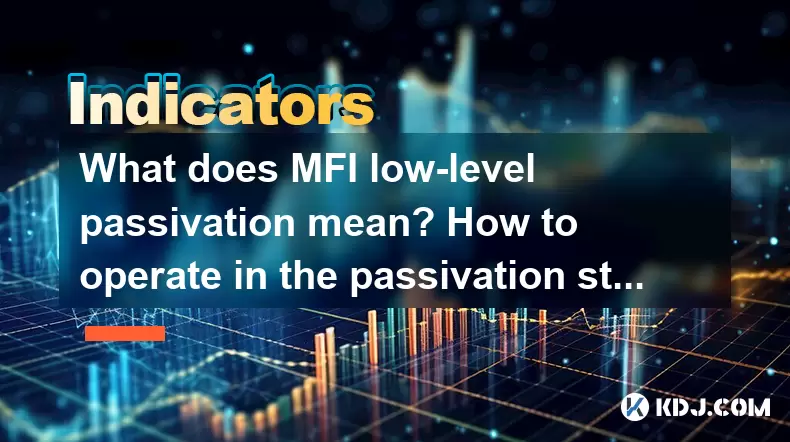
Understanding MFI Low-Level Passivation
MFI low-level passivation refers to a stage in the Money Flow Index (MFI) analysis where the indicator falls into a lower range, typically below 20. This stage indicates that the asset is considered oversold, suggesting a potential reversal or correction in price might be imminent. The MFI, a momentum indicator that measures the flow of money into and out of a security, is used by traders to gauge buying and selling pressure. When the MFI drops to low levels, it signals that the selling pressure has been intense, but it may be nearing exhaustion.
Importance of MFI Low-Level Passivation
The significance of MFI low-level passivation lies in its ability to signal potential buying opportunities. When the MFI falls below 20, it suggests that the asset has been heavily sold and may be due for a price increase. This can be particularly useful for traders looking to enter the market at a potentially advantageous point. However, it's crucial to understand that while the MFI can provide valuable insights, it should not be used in isolation. Combining the MFI with other technical indicators and market analysis can help confirm the signals and improve trading decisions.
Identifying MFI Low-Level Passivation
To identify MFI low-level passivation, traders need to follow these steps:
- Calculate the MFI: The MFI is calculated using the typical price (high + low + close / 3) and the volume of the asset. The formula involves comparing the positive and negative money flows over a specified period, typically 14 days.
- Monitor the MFI Value: Keep a close eye on the MFI value. When it drops below 20, the asset is considered to be in the low-level passivation stage.
- Confirm with Price Action: Look for signs of price stabilization or reversal, such as bullish candlestick patterns or a decrease in selling volume, to confirm the potential for a price increase.
Operating in the MFI Low-Level Passivation Stage
Operating in the MFI low-level passivation stage requires a strategic approach to maximize potential gains while managing risks. Here are detailed steps to follow:
- Confirm the Signal: Before taking any action, confirm the MFI signal with other technical indicators, such as the Relative Strength Index (RSI) or Moving Averages. This helps to validate the potential for a price reversal.
- Set Entry Points: Once the signal is confirmed, determine your entry points. This could be at the current price or after a small bounce, depending on your risk tolerance and trading strategy.
- Place Stop-Loss Orders: To manage risk, place stop-loss orders just below the recent low. This helps to limit potential losses if the price continues to fall.
- Monitor Price Action: Keep a close watch on the price action after entering the trade. Look for signs of a sustained upward movement, such as higher highs and higher lows, to confirm the trend reversal.
- Adjust Stop-Loss and Take-Profit Levels: As the price moves in your favor, adjust your stop-loss to lock in profits and set take-profit levels to secure gains at predetermined price levels.
Tools and Resources for MFI Low-Level Passivation Analysis
Utilizing the right tools and resources is essential for effective MFI low-level passivation analysis. Traders can benefit from the following:
- Trading Platforms: Platforms like MetaTrader 4 and 5 offer built-in MFI indicators and allow for customization of settings to match individual trading strategies.
- Charting Software: Tools such as TradingView provide advanced charting capabilities and the ability to overlay multiple indicators, making it easier to confirm MFI signals.
- Educational Resources: Websites, books, and courses on technical analysis can deepen your understanding of the MFI and its application in trading.
- Community Forums: Engaging with other traders in forums and social media groups can provide real-time insights and strategies for trading based on MFI low-level passivation.
Practical Example of MFI Low-Level Passivation
To illustrate MFI low-level passivation in practice, consider the following example involving Bitcoin (BTC):
- Scenario: Over the past few weeks, Bitcoin's price has been steadily declining, and the MFI has dropped below 20, indicating low-level passivation.
- Analysis: The trader confirms the signal by observing that the RSI is also in oversold territory and that the price is forming a bullish engulfing pattern, suggesting potential reversal.
- Action: The trader decides to enter a long position at the current price, setting a stop-loss just below the recent low. As the price begins to rise, the trader adjusts the stop-loss to lock in profits and sets a take-profit level at a resistance zone identified on the chart.
- Outcome: The price continues to rise, hitting the take-profit level, and the trader exits the position with a profit.
Frequently Asked Questions
Q1: Can MFI low-level passivation be used for all cryptocurrencies?
A1: While MFI low-level passivation can be applied to any cryptocurrency, the effectiveness may vary depending on the liquidity and trading volume of the asset. More liquid assets tend to provide more reliable signals.
Q2: How often should I check the MFI for low-level passivation?
A2: The frequency of checking the MFI depends on your trading style. Day traders may monitor it multiple times a day, while swing traders might check it daily or weekly. It's important to align your monitoring with your trading strategy.
Q3: Is MFI low-level passivation more effective in certain market conditions?
A3: MFI low-level passivation can be more effective in trending markets where there is a clear direction. In choppy or sideways markets, the signals may be less reliable, and additional confirmation from other indicators is crucial.
Q4: Can MFI low-level passivation be used in conjunction with fundamental analysis?
A4: Yes, combining MFI low-level passivation with fundamental analysis can provide a more comprehensive view of the market. While MFI focuses on price and volume data, fundamental analysis considers broader economic and project-specific factors, enhancing decision-making.
Disclaimer:info@kdj.com
The information provided is not trading advice. kdj.com does not assume any responsibility for any investments made based on the information provided in this article. Cryptocurrencies are highly volatile and it is highly recommended that you invest with caution after thorough research!
If you believe that the content used on this website infringes your copyright, please contact us immediately (info@kdj.com) and we will delete it promptly.
- Cardano (ADA) Price Check: Bullish Potential or Better Bets?
- 2025-07-26 21:10:12
- Pi Network, Remittix, and the Binance Listing Buzz: What's the Deal?
- 2025-07-26 20:50:12
- XRP in 2026: Altcoin Daily's Bullish Flip and What It Means for You
- 2025-07-26 21:50:12
- Meme Coin Mania: Is Punisher Coin the New Dogecoin?
- 2025-07-26 21:50:12
- Ethereum ETFs Surge, Bitcoin Holds Steady, and Staking Yields Soar: A Crypto Trifecta
- 2025-07-26 21:55:12
- Bitcoin to $1 Million? Decoding the Future of Crypto
- 2025-07-26 20:55:19
Related knowledge
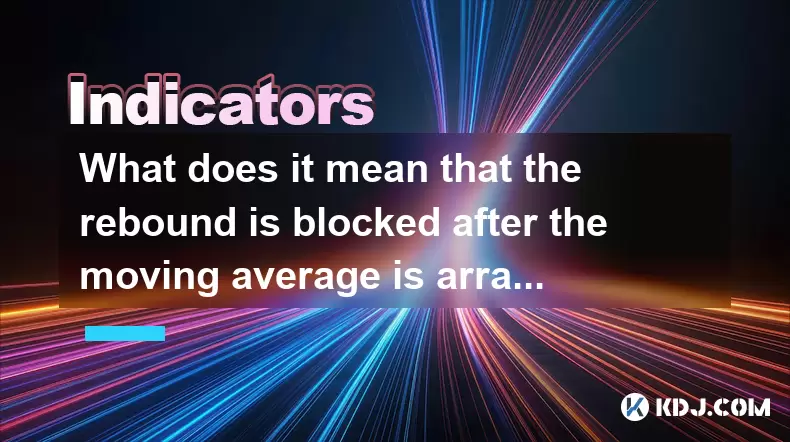
What does it mean that the rebound is blocked after the moving average is arranged in a short position for the first time?
Jul 26,2025 at 10:51am
Understanding the Short-Term Moving Average ConfigurationWhen traders refer to a 'short position arrangement' in moving averages, they are describing ...
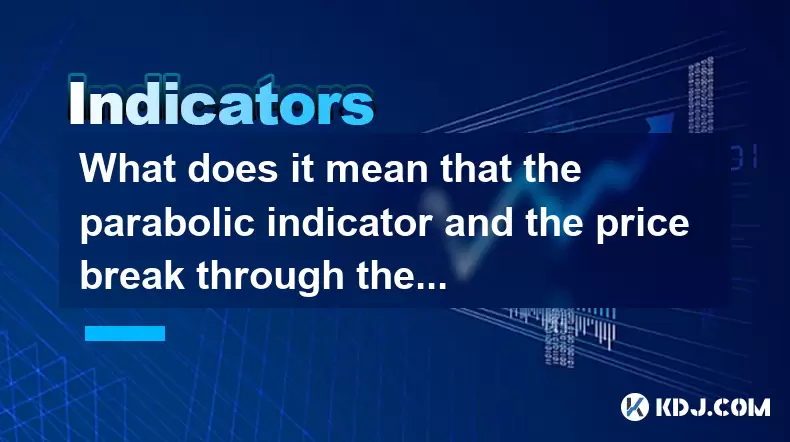
What does it mean that the parabolic indicator and the price break through the previous high at the same time?
Jul 26,2025 at 07:22pm
Understanding the Parabolic Indicator (SAR)The Parabolic SAR (Stop and Reverse) is a technical analysis tool developed by J. Welles Wilder to identify...
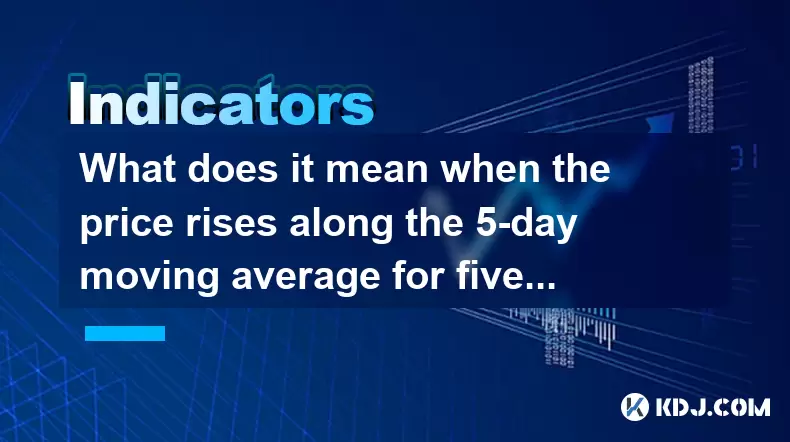
What does it mean when the price rises along the 5-day moving average for five consecutive days?
Jul 26,2025 at 08:07am
Understanding the 5-Day Moving Average in Cryptocurrency TradingThe 5-day moving average (5DMA) is a widely used technical indicator in cryptocurrency...
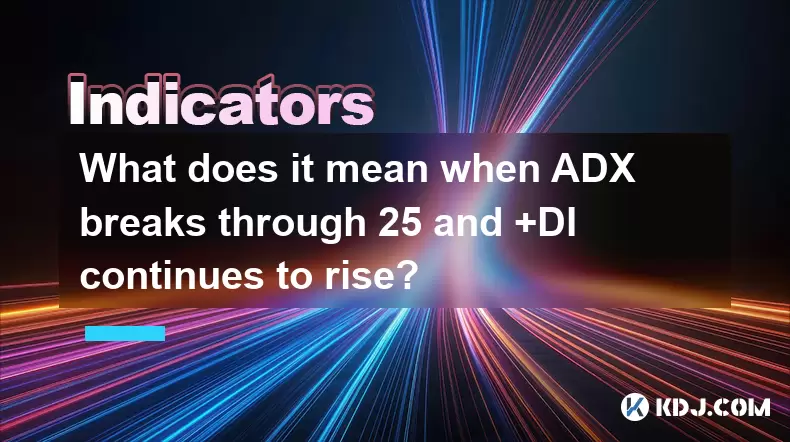
What does it mean when ADX breaks through 25 and +DI continues to rise?
Jul 26,2025 at 07:00pm
Understanding the ADX Indicator and Its ThresholdsThe Average Directional Index (ADX) is a technical analysis tool used to measure the strength of a t...
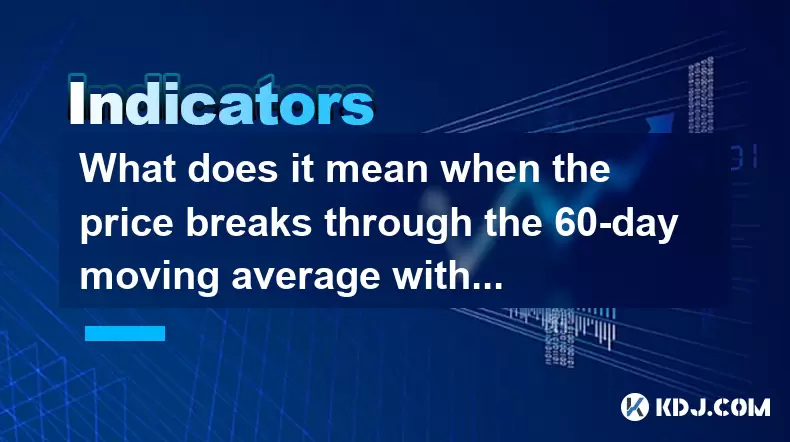
What does it mean when the price breaks through the 60-day moving average with a large volume but shrinks the next day?
Jul 26,2025 at 06:01am
Understanding the 60-Day Moving Average in Cryptocurrency TradingThe 60-day moving average (60DMA) is a widely used technical indicator in the cryptoc...
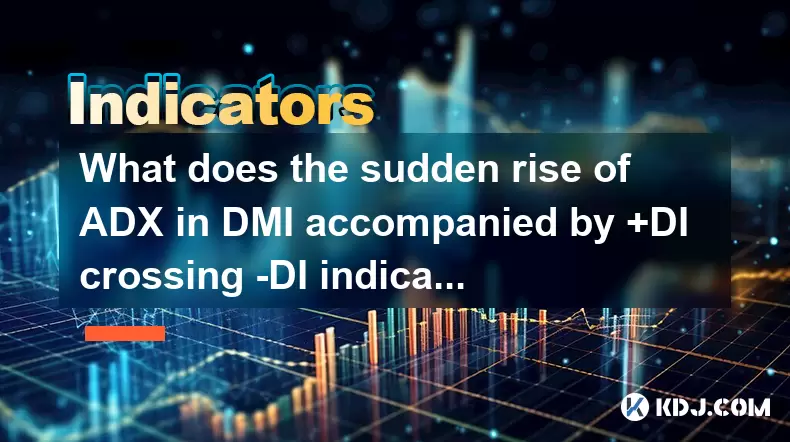
What does the sudden rise of ADX in DMI accompanied by +DI crossing -DI indicate?
Jul 26,2025 at 01:21pm
Understanding the DMI and Its Core ComponentsThe Directional Movement Index (DMI) is a technical analysis tool used to determine the presence and stre...

What does it mean that the rebound is blocked after the moving average is arranged in a short position for the first time?
Jul 26,2025 at 10:51am
Understanding the Short-Term Moving Average ConfigurationWhen traders refer to a 'short position arrangement' in moving averages, they are describing ...

What does it mean that the parabolic indicator and the price break through the previous high at the same time?
Jul 26,2025 at 07:22pm
Understanding the Parabolic Indicator (SAR)The Parabolic SAR (Stop and Reverse) is a technical analysis tool developed by J. Welles Wilder to identify...

What does it mean when the price rises along the 5-day moving average for five consecutive days?
Jul 26,2025 at 08:07am
Understanding the 5-Day Moving Average in Cryptocurrency TradingThe 5-day moving average (5DMA) is a widely used technical indicator in cryptocurrency...

What does it mean when ADX breaks through 25 and +DI continues to rise?
Jul 26,2025 at 07:00pm
Understanding the ADX Indicator and Its ThresholdsThe Average Directional Index (ADX) is a technical analysis tool used to measure the strength of a t...

What does it mean when the price breaks through the 60-day moving average with a large volume but shrinks the next day?
Jul 26,2025 at 06:01am
Understanding the 60-Day Moving Average in Cryptocurrency TradingThe 60-day moving average (60DMA) is a widely used technical indicator in the cryptoc...

What does the sudden rise of ADX in DMI accompanied by +DI crossing -DI indicate?
Jul 26,2025 at 01:21pm
Understanding the DMI and Its Core ComponentsThe Directional Movement Index (DMI) is a technical analysis tool used to determine the presence and stre...
See all articles

























































































